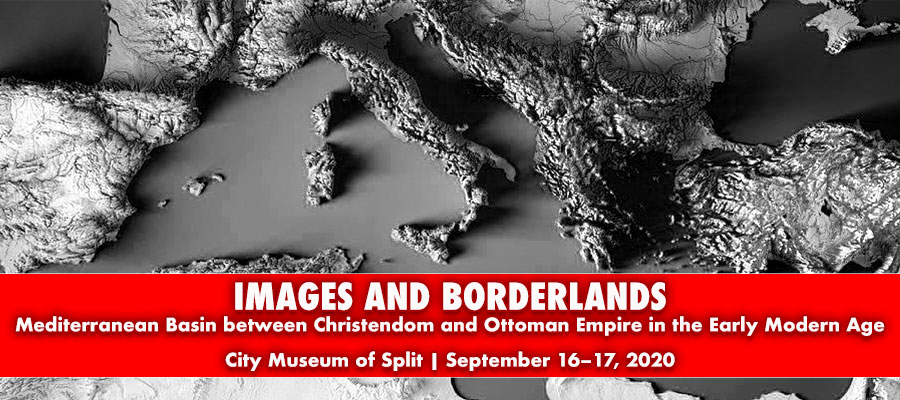Images and Borderlands: Mediterranean Basin between Christendom and Ottoman Empire in the Early Modern Age, City Museum of Split, September 16–17, 2020
Following in the footsteps of Fernand Braudel, an increasing number of recent studies show that the Mediterranean basin might be considered as a “borderland” (Darling 2012), “borderscape” (Brambilla 2016) or “Frontier” (Castelnuovo 2000) suggesting that this area is not strictly a border between Christian and Muslim civilization, but a basin in which the two traditions and cultures meet and overlap, with an extraordinary variety of reactions to the hegemonic practices (acceptance, conflict, refusal, dissent).
The aim of this conference is to bring together scholars who will discuss, from different perspectives and with a multidisciplinary approach, the variety of themes (topics) which revolve around the common issue of reflecting the problem of borderlands as a consequence of the encounter between Christendom and Ottoman Empire in the Early modern Mediterranean. The starting point of examination will be images, i.e. the usage of images (pictures, mental images, literaly images and other visual representations …) as historical evidences (Burke 2008).
In line with the main goal of the conference, four main sessions are proposed: Images generated after the Battle of Lepanto, War of Candia, Morean War and Ottoman–Venetian War. Special attention will be devoted to the celebration of the victory of Lepanto, that became the model for celebrations of other victories, and to the comparison between the different points of view (those of winners and losers). All four previously mentioned wars generated minor or greater changes in political boundaries, but political boundaries do not always correspond to artistic, cultural or ideological boundaries or to the boundaries of the religious authorities.
Within these four sessions scholars are invited to send abstracts on the topics listed below.
- The “borderland”, “borderscape”, “frontier” paradigms in art history, history and geography, regarding the Mediterranean area
- How do images document victories and defeats in war conflicts from the Christian point of view? How do other typologies of sources document victories and defeats in war conflicts from the Muslim point of view?
- What was the image and the (self)perception of the outcome of the battles among the Ottomans and within the territories under their dominion?
- Beyond visible: miraculous images, prophecies, sermons, pamphlets, news… How were images and words used to support faith in the positive outcome of the conflict, and how to spread news, propagate victories or support conversions in the borderlands of Mediterranean?
- Artists who cross the boundaries. Is there any evidence of artists producing images for different commissioners with the same or different iconography regarding the Christian-Muslim issues?
- What is the difference between written and iconographic evidences?
- Great commandants; representations, symbols of the triumph and trophies exposed
- The architecture and its image as the marker of the territorial possession.
- What kind of symbols were used to represent the other side and how did they influence the shaping of otherness?
This call for papers is now open for those researchers who are interested in participating in the conference. Both early stage scholars as well as senior scholars are welcome. Scholars from different study fields are encouraged to give their proposals in order to achieve the goals of interdisciplinarity and plurality of dialogue.
